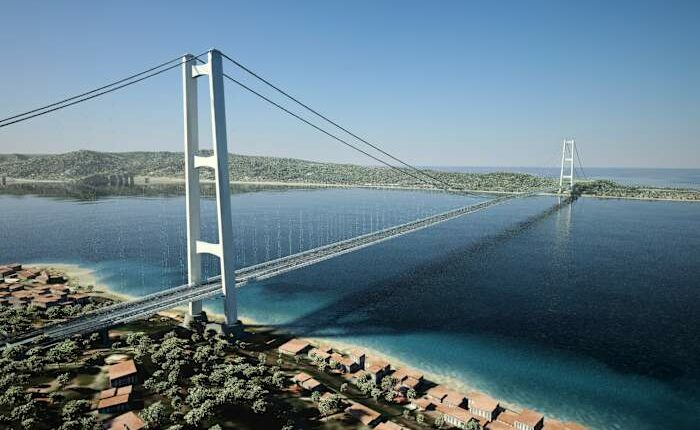Share this @internewscast.com

ROME – On Saturday, a large crowd gathered in Messina, Sicily to voice their opposition to the government’s ambitious 13.5-billion-euro ($15.5 billion) plan to construct a bridge linking mainland Italy to Sicily.
Demonstrators are firmly against the project, citing its immense scale, the potential for earthquakes, environmental concerns, and the risk of mafia involvement.
For years, the concept of a bridge connecting Sicily with Italy has been on the table but repeatedly shelved due to these unresolved issues. This week, however, saw significant progress when a government panel responsible for major public projects gave the green light.
Transport Minister Matteo Salvini, the project’s main political backer, called it “the biggest infrastructure project in the West.”
Proponents, like Salvini, refer to studies suggesting the bridge could create 120,000 jobs annually and boost the underdeveloped southern Italian economy as supplementary infrastructure investments follow.
Critics remain skeptical of these economic projections and express frustration over the potential displacement of about 500 families for the bridge’s construction.
During the march in Messina, protesters loudly proclaimed, “The Strait of Messina can’t be touched,” while bearing banners reading “No Ponte” (No Bridge). Organizers claimed the participation reached 10,000 individuals.
The proposed bridge would span nearly 3.7 kilometers (2.2 miles) with a suspended section of 3.3 kilometers (more than 2 miles). It would surpass Turkey’s Canakkale Bridge by 1,277 meters (4,189 feet) to become the longest suspension bridge in the world.
Preliminary work could begin as early as late September or early October, pending approval from Italy’s Court of Audit. Full construction is scheduled to begin in 2026, with completion targeted between 2032 and 2033.
Plans for a bridge have been approved and canceled multiple times since the Italian government first solicited proposals for one in 1969. Premier Giorgia Meloni’s administration revived the project in 2023.
With three car lanes in each direction flanked by a double-track railway, the bridge would have the capacity to carry 6,000 cars an hour and 200 trains a day — reducing the time to cross the strait by ferry from up to 100 minutes to 10 minutes by car. Trains would save 2/12 hours in transit time, Salvini said.
The project could also support Italy’s commitment to raise defense spending to 5% of GDP targeted by NATO, as the government has indicated it would classify the bridge as defense-related.
Italy argues that the bridge would form a strategic corridor for rapid troop movements and equipment deployment, qualifying it as “security-enhancing infrastructure.”
Environmental groups, however, have lodged complaints with the EU, citing concerns that the project would impact migratory birds.
Italy’s president has also insisted that the project remain subject to anti-mafia legislation that applies to all large-scale infrastructure projects. Salvini pledged that keeping organized crime out of the project was a top priority.
Copyright 2025 The Associated Press. All rights reserved. This material may not be published, broadcast, rewritten or redistributed without permission.











